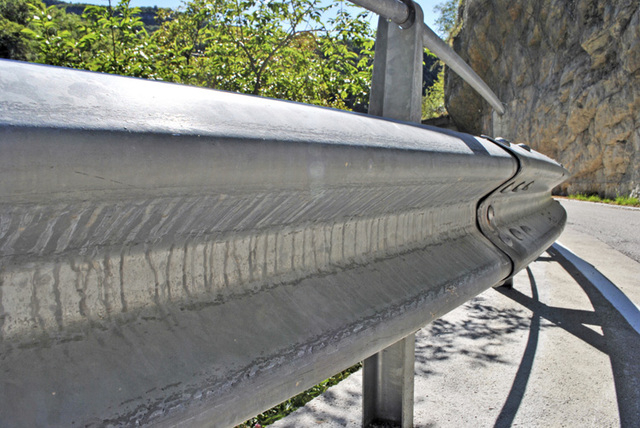Feds launch highway guardrail complaint website

NEW YORK — A U.S. highway regulator opened an Internet portal this week allowing the public to report accidents tied to a Trinity Industries Inc. guardrail system which has been linked by lawsuits to at least eight deaths.
The Federal Highway Administration’s move is the latest sign of intensifying government scrutiny of Trinity and its shock-absorbing guardrail end-terminal, the ET-Plus. Drivers and their families have claimed that the system can seize up on impact, spearing cars instead of giving way as intended.
Earlier this month, the highway agency told U.S. lawmakers it would consider mandating additional crash tests on the system if it finds the current round, which started Dec. 10, isn’t sufficient. One of those lawmakers, U.S. Sen. Richard Blumenthal, D-Conn., said he plans to press Trinity in the new year for accountability over undocumented changes it might have made to the ET-Plus.
The Nevada Transportation Department was the first in the nation to ban the Trinity ET-Plus guardrails, not because of the investigations and lawsuits involving the traffic deaths but because the company failed to notify the state of design changes to the product.
The decision to remove the guardrails from the state’s qualified products list occurred in January before the states of Missouri and Massachusetts banned them in the course of their accident investigations.
The Nevada Transportation Department’s chief engineer, John Terry, said it’s unclear how many, if any, of the redesigned guardrails are installed on Nevada’s highways. Usually when a guardrail is damaged in an accident, transportation crews will be dispatched to repair it as opposed to replacing it.
Blumenthal has joined the Federal Highway Administration in asking whether Dallas-based Trinity quietly adjusted the dimensions of its system. Such a revision would represent the third version of the end-terminal since Trinity introduced it in 2000. The company admitted once already to changing the ET-Plus in 2005 and not telling the agency. It has denied allegations in lawsuits that the modified, second version poses an unnecessary danger to crashing cars by locking up when hit.
More recently, to address that potentially lethal flaw, Trinity began making yet another undisclosed version of the system, two guardrail industry professionals asserted in a Dec. 12 Bloomberg News article. It is the possibility of a third iteration that has attracted the attention of Blumenthal.
“I’m very concerned about a potential third version that may, in effect, conceal or cover up defects in the other versions that are still out on America’s roads,” Blumenthal said in a Dec. 18 interview. “The possibility of additional changes raises the specter that what we thought was bad, could be even worse.”
In a Dec. 24 response to questions about the government focus on whether it had made more modifications, Trinity didn’t address the specific dimension industry professionals said had changed. The company has said that, since 2005, it has disclosed to regulators all adjustments to its guardrail system, and this week stated it is in regular communication with the highway administration and that the current crash tests of its product are appropriate.
Any possibility that Trinity hid an alleged safety problem may deepen uncertainty on which of the hundreds of thousands of its systems lining U.S. roadways may have a deadly fault.
It could also raise questions about what Trinity told the the highway administration, an agency whose sign-off on highway safety gear can help steer hundreds of millions of dollars in taxpayer reimbursements to their manufacturers. And it could pose a challenge to the effectiveness of the agency’s current scheme for vetting the safety of highway devices.
In November, the highway administration approved Trinity’s plan for running new crash tests on the ET-Plus system, as requested by the agency. Those tests are due to be completed in January.
Blumenthal and other lawmakers have criticized the tests, saying they aren’t rigorous enough to fully vet the product’s safety. Blumenthal — chairman of the Senate’s Subcommittee on Surface Transportation and Merchant Marine Infrastructure, Safety, and Security — said he will continue to push the highway administration to require more testing, including of any would-be third version.
The regulator, a unit of the U.S. Department of Transportation, said in a Dec. 9 email to lawmakers that it might order additional tests if it decides the ET-Plus has vulnerabilities beyond the current review.
The standards guiding the ongoing crash tests are “appropriate,” Trinity said in an emailed statement, explaining that they are the same ones to which the system always has been designed, manufactured and tested.
The highway administration’s efforts to determine whether a third version might be in use included a public call Dec. 24 for information about crashes involving the ET-Plus, and measurements of the device as found on roadsides. The request, published in the Federal Register, specifies several “key dimensions” in which the regulator is interested, including those highlighted in the recent Bloomberg News report.












